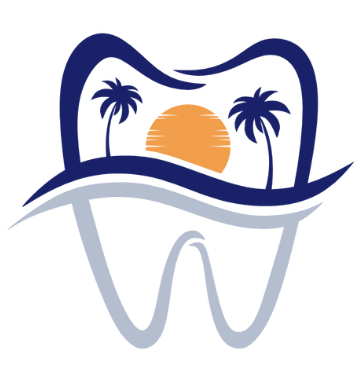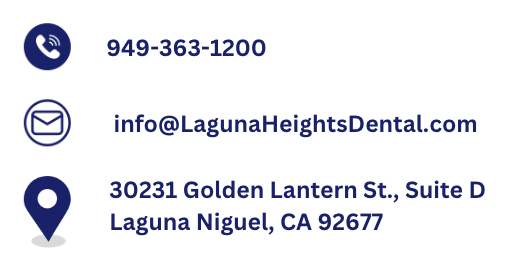Invisalign represents one of the most amazing advances in modern orthodontics, but like any medical treatment, it has specific limitations that make it unsuitable for certain dental conditions that require more intensive intervention. Dr. Nazita Gaff and Dr. Brad Labrecque at Laguna Heights Dental in Texas use their fourth-generation expertise and advanced diagnostic technology to help patients understand when Invisalign will work beautifully for their needs and when alternative treatments might provide better results. Their comprehensive approach ensures that every patient receives the most appropriate treatment for their unique situation, whether that’s Invisalign or traditional orthodontic methods.
Understanding these limitations doesn’t diminish the value of Invisalign treatment but rather helps patients make informed decisions about their orthodontic care based on realistic expectations and clinical evidence. Just like you wouldn’t use a screwdriver to hammer a nail, choosing the right orthodontic tool for your specific dental needs ensures the best possible outcomes and prevents disappointment or incomplete treatment results.
Complex Tooth Movement Limitations
Invisalign excels at many types of tooth movement, but certain complex orthodontic corrections require the robust mechanical advantage that only traditional braces can provide through their bracket and wire system. Understanding these limitations helps patients set realistic expectations and choose the treatment approach most likely to achieve their desired results efficiently and effectively.
Invisalign movement limitations include:
- Severe tooth rotations exceeding 20 degrees, especially in back teeth
- Significant vertical tooth movement or intrusion of teeth into the jawbone
- Complex root positioning that requires precise three-dimensional control
- Major corrections of tilted teeth beyond 45-degree angles
- Simultaneous movement of multiple teeth in different directions
- Corrections requiring more than 50 pounds of continuous pressure per tooth
Traditional braces utilize a continuous wire system that can apply consistent, precisely controlled forces in multiple directions simultaneously, making them superior for complex movements that challenge the capabilities of removable aligners. While Invisalign continues to improve and can handle increasingly complex cases, certain biomechanical limitations still favor traditional orthodontic approaches for the most challenging tooth movement requirements.
Severe Spacing and Crowding Challenges
Extreme spacing issues and severe dental crowding present unique challenges that may exceed Invisalign’s capacity to deliver optimal results, particularly when gaps are larger than 6mm or when crowding requires significant tooth extraction or jaw expansion. These complex spatial relationships often require the precise, sustained pressure that traditional braces can provide through their fixed appliance design.
Understanding the relationship between spacing severity and treatment effectiveness helps patients appreciate why their orthodontist might recommend alternative approaches for certain conditions. Invisalign works by applying gentle, consistent pressure through custom-fitted aligners, but this same gentle approach may be insufficient for major spatial corrections that require more aggressive intervention.
| Condition Type | Invisalign Suitability | Alternative Treatment | Expected Outcome |
| Gaps under 6mm | Excellent | May not be needed | Predictable closure |
| Gaps 6-10mm | Limited effectiveness | Traditional braces | Better control |
| Gaps over 10mm | Not recommended | Braces + procedures | Comprehensive solution |
| Severe crowding | Case dependent | Braces + extractions | Space creation |
| Asymmetrical spacing | Challenging | Braces with elastics | Balanced alignment |
The mechanical limitations of clear aligners become most apparent when treating severe crowding that requires tooth extraction or significant jaw expansion to create adequate space for proper alignment. These comprehensive treatment approaches often require the fixed appliance system of traditional braces combined with additional orthodontic appliances or surgical procedures that cannot be effectively delivered through removable aligner therapy alone.
Significant Bite Correction Requirements
Complex bite problems including severe overbites, underbites, crossbites, and open bites often require the comprehensive mechanical advantage that traditional orthodontic appliances provide through their ability to apply sustained, multi-directional forces. While Invisalign has improved significantly in treating bite issues, certain severe bite discrepancies still respond better to traditional treatment approaches that offer superior control over tooth and jaw positioning.
The complexity of bite correction lies in the need to coordinate upper and lower jaw relationships while simultaneously moving individual teeth into proper alignment, a challenge that requires precise force application and timing that removable aligners may not provide consistently. Traditional braces offer the advantage of continuous pressure and the ability to incorporate additional appliances like elastics, springs, and headgear that enhance treatment capabilities for complex bite corrections.
Bite conditions challenging for Invisalign include:
- Deep overbites greater than 7mm that require significant vertical correction
- Severe underbites involving skeletal jaw discrepancies
- Complex crossbites affecting multiple teeth or entire jaw segments
- Open bites requiring intrusion of front teeth or posterior expansion
- Class III malocclusions with significant jaw relationship problems
- Combinations of bite problems requiring multi-phase treatment approaches
Understanding these limitations helps patients appreciate why their orthodontist might recommend traditional braces or combined treatment approaches for severe bite problems, ensuring they receive the most effective treatment for their specific condition rather than attempting correction with less suitable methods.
Comprehensive Diagnostic Assessment at Laguna Heights Dental
At Laguna Heights Dental, the treatment selection process begins with incredibly thorough diagnostic evaluation using advanced imaging technology, clinical examination, and detailed analysis of each patient’s unique orthodontic needs and lifestyle considerations. This comprehensive assessment ensures that treatment recommendations are based on scientific evidence and clinical experience rather than patient preferences alone, leading to better outcomes and higher satisfaction rates.
The diagnostic process incorporates digital imaging, bite analysis, facial photography, and detailed medical history review to create a complete picture of each patient’s orthodontic situation and treatment requirements. Dr. Gaff and Dr. Labrecque use their extensive experience to identify cases where Invisalign will provide excellent results and those where alternative treatments offer superior outcomes, ensuring that every patient receives personalized recommendations based on their individual circumstances.
Advanced treatment planning software allows the team to simulate different treatment approaches and compare potential outcomes, helping patients understand why specific recommendations are made and what they can expect from various treatment options. This technology-enhanced approach to treatment selection removes guesswork and provides patients with clear, evidence-based guidance for making informed decisions about their orthodontic care.
Patient Education and Informed Decision Making
Successful orthodontic treatment depends heavily on patients understanding their treatment options, limitations, and responsibilities throughout the process, which is why Laguna Heights Dental invests significant time in patient education and communication. Clear explanations of treatment capabilities and limitations help prevent disappointment while ensuring that patients have realistic expectations about their chosen treatment approach and timeline.
The education process includes detailed discussion of treatment alternatives, expected outcomes, potential challenges, and long-term maintenance requirements for each option being considered. Patients learn about the science behind different treatment approaches and why certain methods work better for specific types of orthodontic problems, empowering them to make informed decisions that align with their goals and lifestyle preferences.
Patient education components include:
- Detailed explanation of individual orthodontic condition and treatment requirements
- Clear discussion of Invisalign capabilities and limitations for specific cases
- Comparison of treatment alternatives with honest assessment of pros and cons
- Realistic timeline expectations and potential challenges during treatment
- Long-term maintenance requirements and retention protocols
- Financial considerations and payment options for different treatment approaches
This comprehensive educational approach ensures that patients understand not only what treatment they’re receiving but why it was selected as the best option for their specific needs, leading to higher compliance rates and better treatment outcomes throughout the orthodontic process.
Making the Right Treatment Choice for Your Smile
The decision between Invisalign and traditional orthodontic treatment should be based on careful consideration of clinical factors, patient preferences, and realistic assessment of treatment capabilities rather than marketing appeal or convenience alone. At Laguna Heights Dental, this decision-making process is guided by decades of clinical experience, advanced diagnostic technology, and genuine commitment to patient satisfaction and optimal outcomes.
Dr. Nazita Gaff and Dr. Brad Labrecque understand that every patient’s orthodontic needs are unique and require individualized assessment and treatment planning that considers not only the clinical aspects of tooth movement but also lifestyle factors, aesthetic preferences, and long-term maintenance capabilities. Their approach ensures that patients receive treatment recommendations based on what will work best for their specific situation rather than a one-size-fits-all approach.
The goal of orthodontic treatment extends beyond just straightening teeth to encompass improved oral health, enhanced function, and increased confidence that lasts a lifetime. Whether that goal is best achieved through Invisalign, traditional braces, or alternative treatment approaches depends on careful analysis of individual circumstances and honest communication between patients and their orthodontic team about expectations, limitations, and long-term commitment to maintaining results.

